506.
Spike-heeled Lark Chersomanes albofasciata (Vlaktelewerik)
Order: Passeriformes. Family: Alaudidae
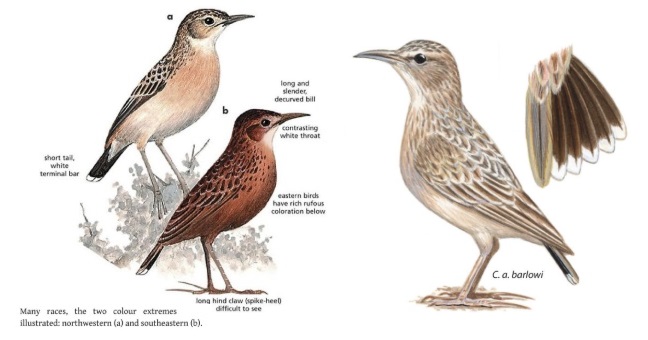
- Spike-heeled Lark Chersomanes albofasciata.jpg (61.59 KiB) Viewed 943 times
Description
Length 15 cm, weight 20-36 g. The Spike-heeled Lark has a long, slightly decurved bill, an upright stance, a short, white-tipped tail and long, straight hind claws. The breast and belly vary from rufous to pale buff, conrasting with the very white chin and throat. Dark brown above with pale edgingd giving a scaly appearance. In flight, it shows a distinctive white band across the end of the tail. Spike-heeled Larks in northern Namibia are much paler than southern birds.
Distribution
Near-endemic to southern Africa, occurring from south-western Angola through to Namibia, Botswana and South Africa. It is distributed mainly in the Karoo and in the grasslands of the Free State, southcentral Transvaal and northwestern KwaZulu-Natal, with scattered records in southern Botswana and Namibia where the distribution tends to be patchy.
C. a. obscurata: sw, c Angola
C. a. erikssoni: n Namibia
C. a. kalahariae: s, w Botswana and n South Africa
C. a. boweni: nw Namibia
C. a. arenaria: s Namibia and sw South Africa
C. a. barlowi: e Botswana
C. a. alticola: ne South Africa
C. a. albofasciata: se Botswana to c South Africa
C. a. garrula: w South Africa
C. a. macdonaldi: s South Africa
Habitat
It generally prefers sparse grassland, desert grassland and shrubland, generally avoiding croplands and cultivated pastures.
Diet
It mainly eats invertebrates and seeds, doing most of its foraging in the ground, plucking food from the soil surface or from the bases of grasses and forbs. It often looks for food around rodent burrows, and it may even take prey aerially or from the leaves of shrubs.
Breeding
The nest is built by both sexes in about 5 days, consisting of a open cup built of dry grass, twigs and rootlets. It is typically placed in an shallow excavated hole in the ground, usually at the base of a grass tuft or shrub. In arid areas it is often placed in a clump of stones and sticks; facing south or east to maximise shade in the heat of the day. It often lays its eggs in response to rainfall, with the egg-laying season generally peaking around August-December. During times of low rainfall when food is scarce, the Spike-heeled Lark lays a small clutch of only two eggs. But when good rains fall they may lay as many as four to five eggs, and may also raise several broods to make up for fewer chicks. The eggs are incubated solely by the female for about 12-13 days. The chicks are fed by both parents, leaving the nest after about 8-12 days, before they are able to fly. They usually become independent a few days later.
Call
Short, rapid, muffled trill, descending in pitch
piree-piree-piree.
Listen to Bird Call
Status
Fairly common near-endemic.
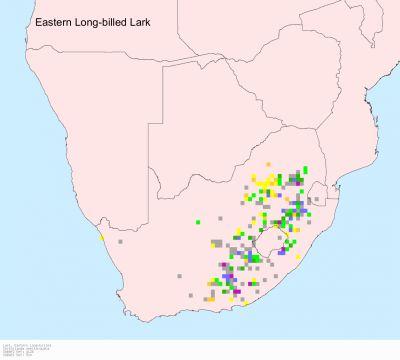



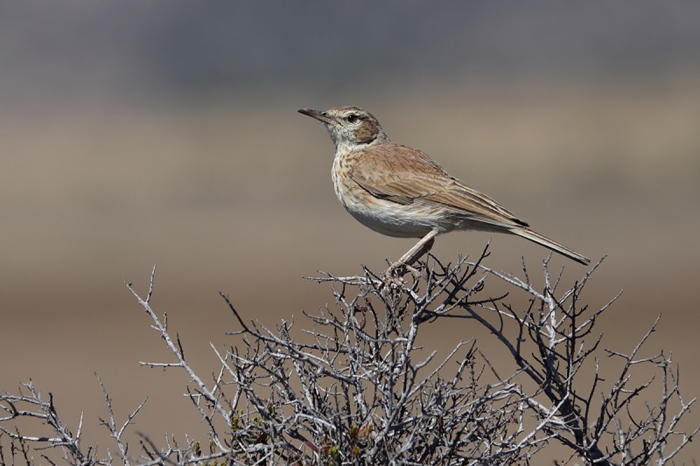 © Puff Addy
© Puff Addy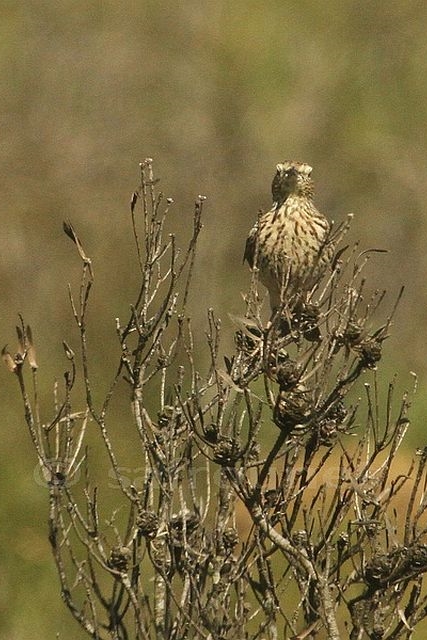 © nan
© nan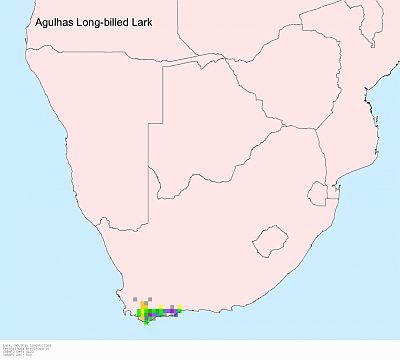
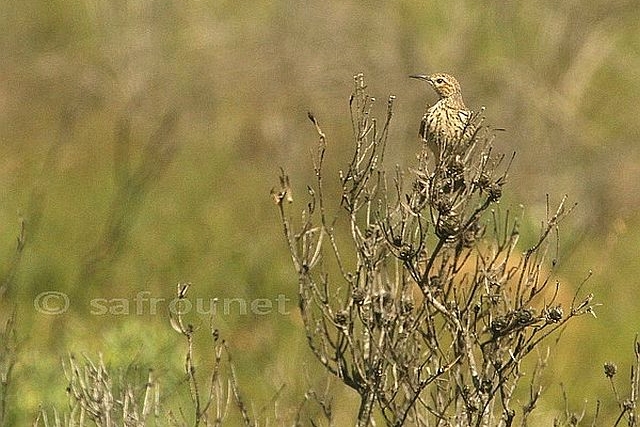 © nan
© nan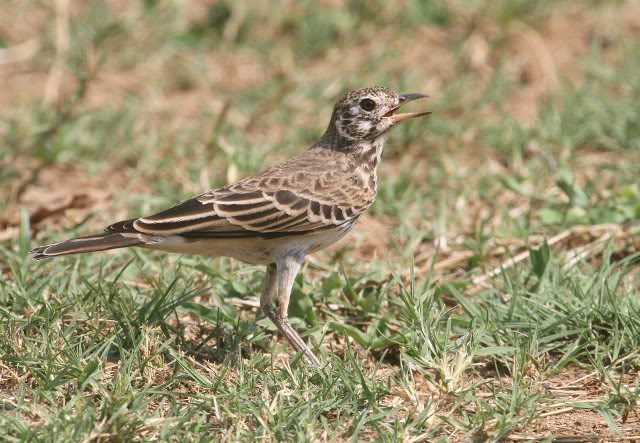
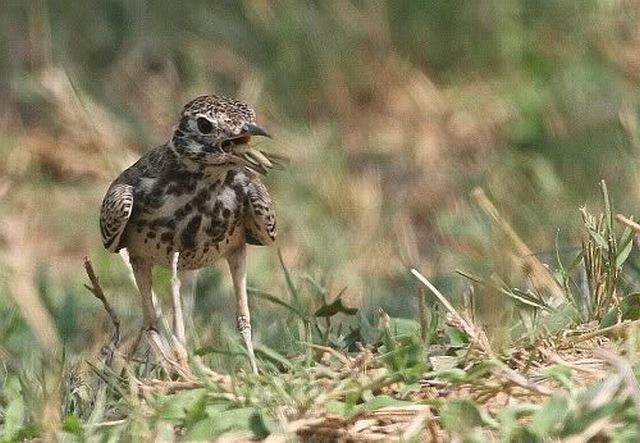
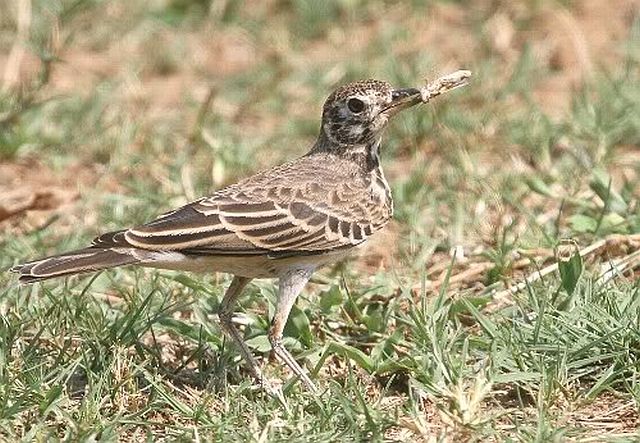
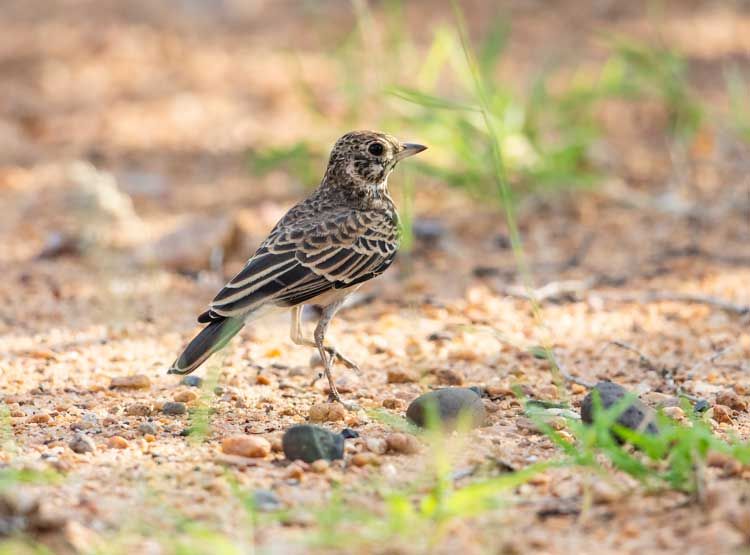 © Pumbaa
© Pumbaa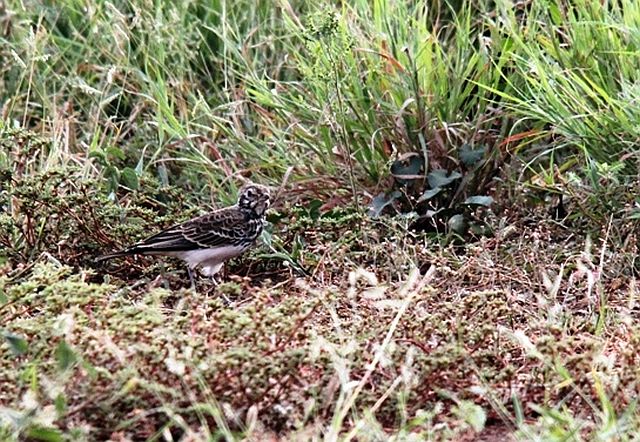 © pooky
© pooky © nan
© nan © pooky
© pooky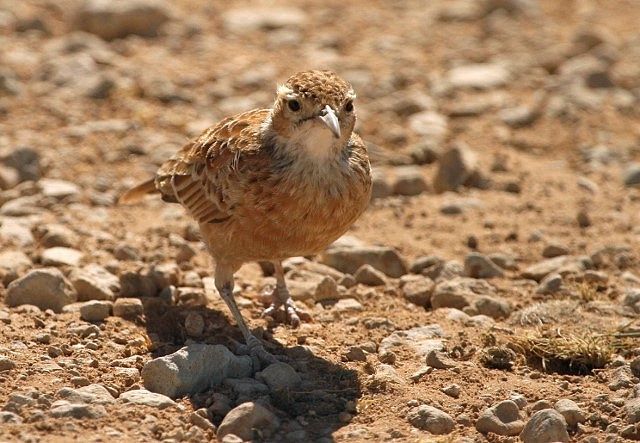 © nan
© nan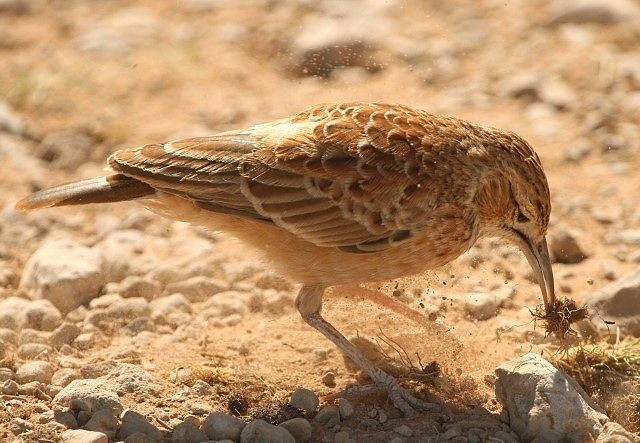 © nan
© nan © Mel
© Mel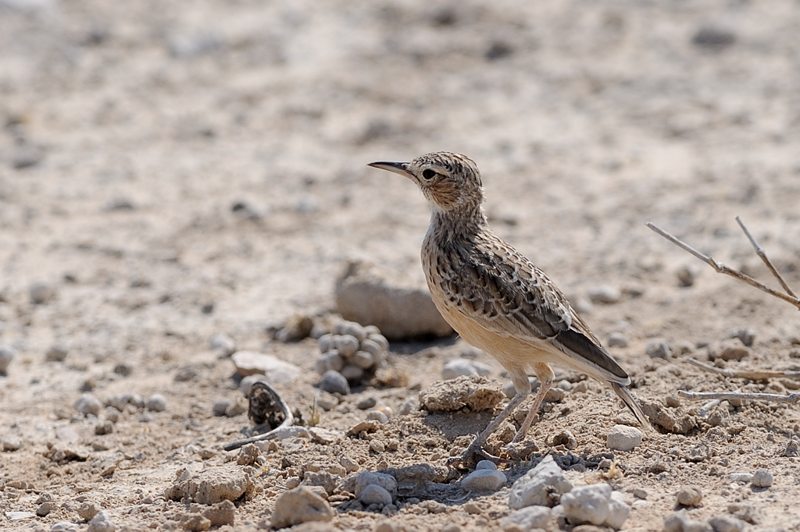 © Dewi
© Dewi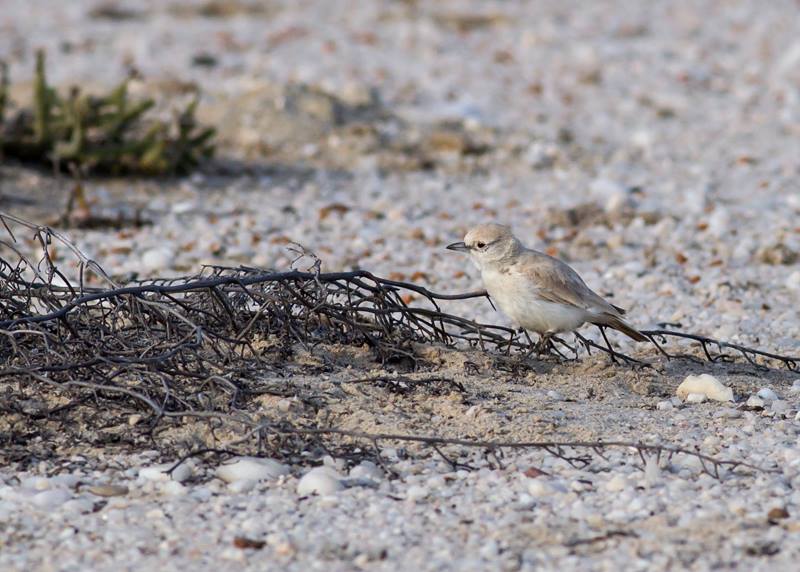 © Michele Nel
© Michele Nel